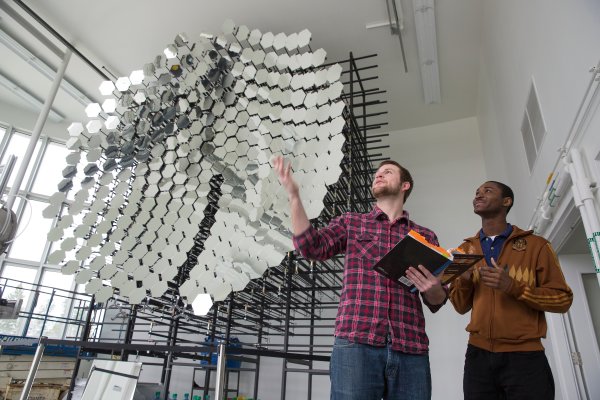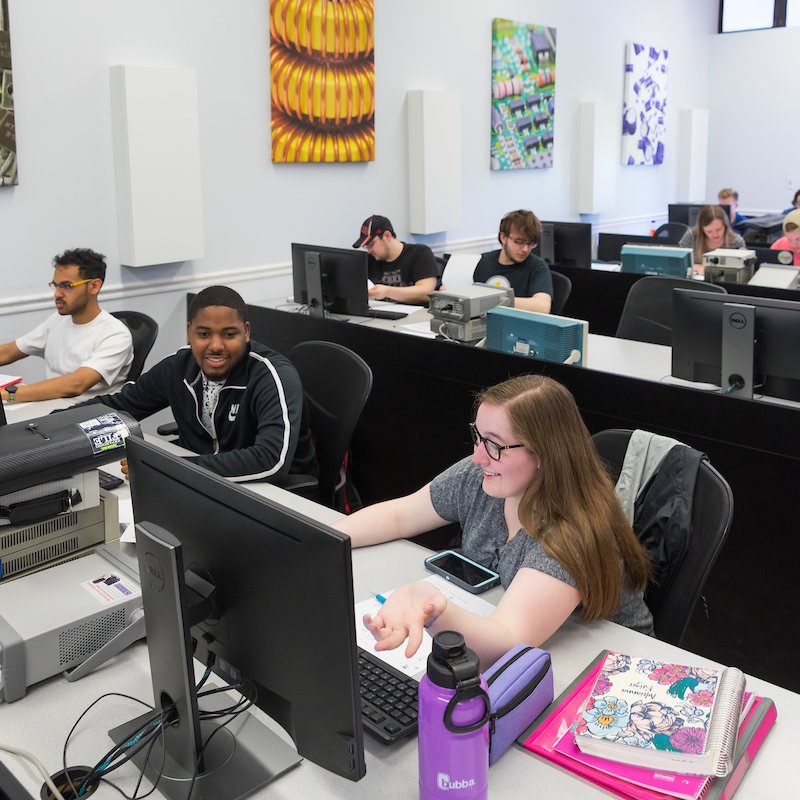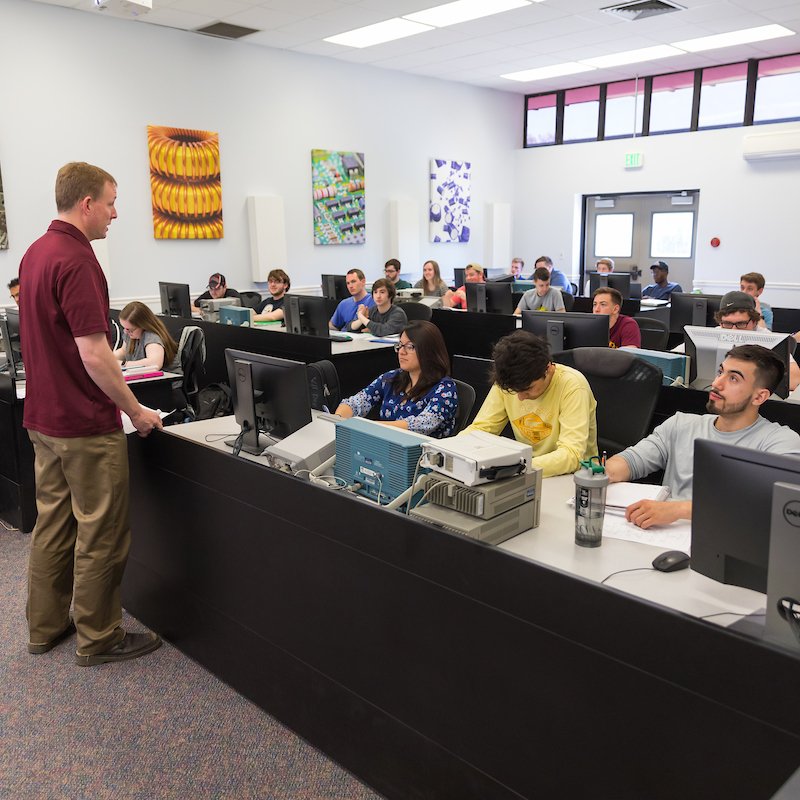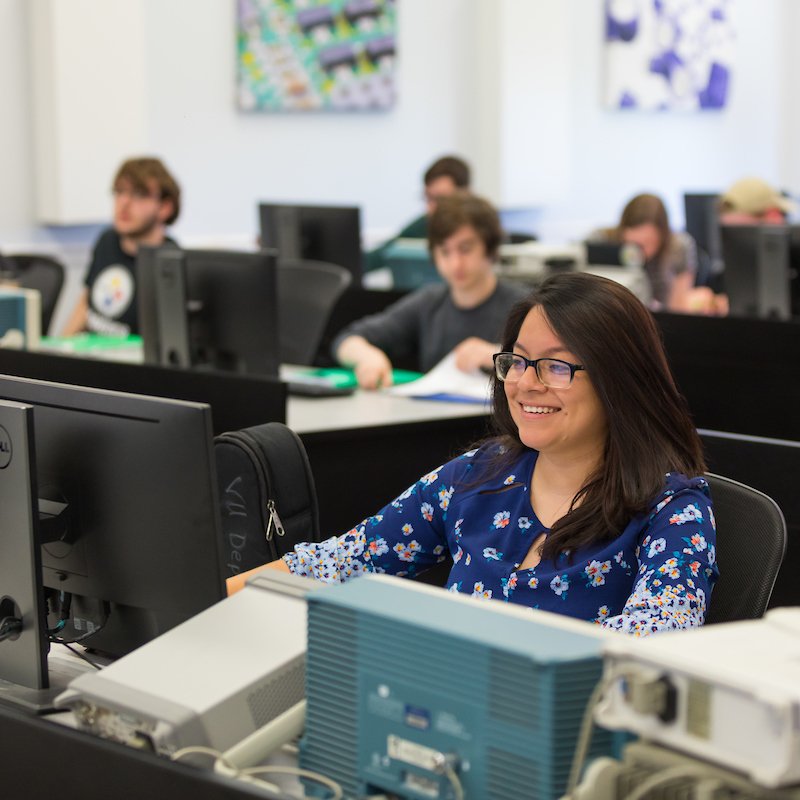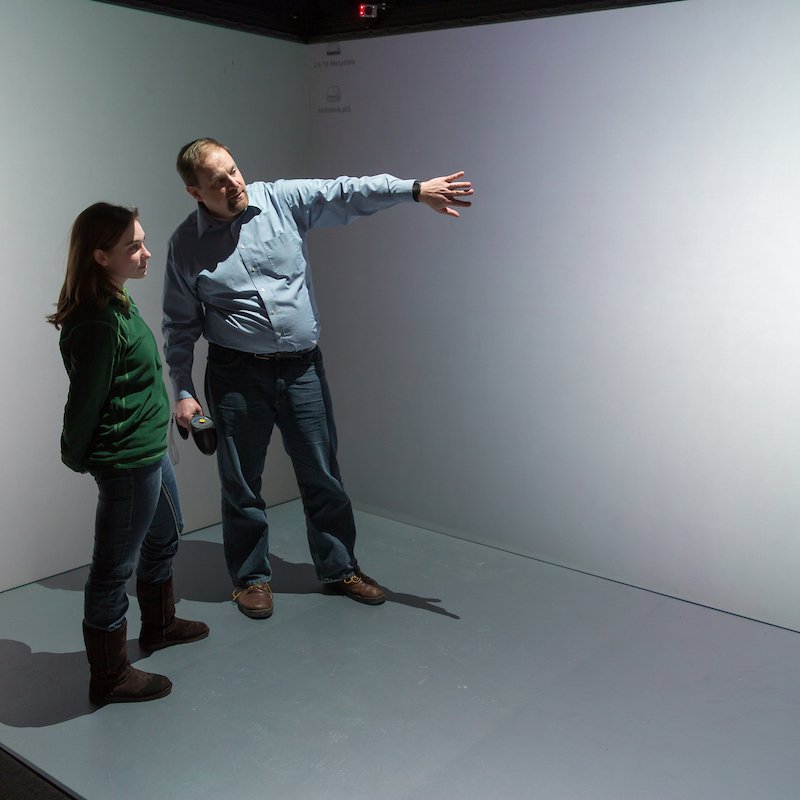Electrical & Computer Engineering Laboratories
The Electronics Laboratory provides students with a solid foundation in the analysis and design of analog circuits such as amplifiers, filters, and power supplies. Students use electronic testing and measurement equipment in several laboratories in the freshman through the senior years. Measurements can be collected automatically or manually using state-of-the-art oscilloscopes and computer data acquisition cards. Students apply theoretical concepts and implement designs from circuits and electronics courses.
Equipment
- Tektronix Four-Channel Digital Oscilloscopes
- National Instruments Data Acquisition Cards
- Hewlett Packard Single-Output Power Supplies
- Hewlett Packard Triple-Output Power Supplies
- Hewlett Packard Function Generators
The Valparaiso Scientific Visualization Lab (SVL) is dedicated to introducing visualization in the education of undergraduate students in all areas of science, technology, engineering and mathematics.
With the continued improvement in computer and projection technology, a number of low cost visualization systems are now available to educational institutions. With the availability of these systems comes the need to develop visualization applications that can be integrated into existing courses. The focus of SVL is to develop visualization applications and to help educators understand how visualization can be used to help students learn complex topics.
The group is directed by the electrical and computer engineering department in the College of Engineering at Valparaiso University. Other departments within the Colleges of Engineering and Arts and Sciences collaborate on the development of visualization applications that are integrated into the undergraduate curriculum.
This material is based upon work supported by the National Science Foundation under Grant No. 0311088.
The Digital Systems Laboratory provides students the opportunity to learn about all types of digital systems, including programmable logic devices, microcontrollers, and digital signal processors.
In the digital systems laboratory (DSL), students learn how to apply digital technology to solve real-world problems. Starting as sophomores, they use programmable logic devices to design relatively simple systems that can be programmed onto a single chip. As juniors they design systems that use microcontrollers, which are compact computers designed to be embedded in the systems they control. Finally, as seniors, students learn about digital signal processing, which uses computer technology to filter, encrypt, compress, and modify digital audio and video signals like those found on a cell phone.
Equipment
-
- Agilent Four-Channel Digital Oscilloscopes
- Tektronix Function Generators
- Infineon XC800 Microcontroller Starter Kit
- Altera Cyclone II Education Boards
- Texas Instrument Digital Signal Processing Boards
</ul
The Senior Design Laboratory in the new Fites Engineering Innovation center is shared by mechanical, civil, and electrical and computer engineering students. Teams of civil engineering students are assigned to work areas that mimic the actual workplace environment that they will experience upon graduation. Within these areas, the students collaborate on a two-semester project to complete a civil engineering project. Examples of projects include highway interchanges, building structures, water removal systems, etc. As an added bonus, senior engineering students have their own workspace for study groups, computer use, etc.
